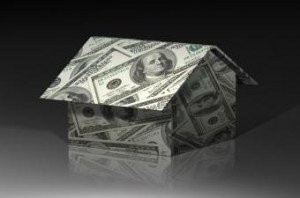 When the housing market starts to exhibit characteristics of a potential housing bubble similar to the one experienced in 2007, such as home prices rising faster than inflation or bidding wars increasing in regularity, it’s easy to expect a potential crash in the future. But according to a report from Realtor.com [1], despite the warning clouds in some of the nation’s hottest markets, the housing market is generally safe, steady, and continuing to grow.
When the housing market starts to exhibit characteristics of a potential housing bubble similar to the one experienced in 2007, such as home prices rising faster than inflation or bidding wars increasing in regularity, it’s easy to expect a potential crash in the future. But according to a report from Realtor.com [1], despite the warning clouds in some of the nation’s hottest markets, the housing market is generally safe, steady, and continuing to grow.
The report, which covered the 50 largest metros from 2001 to 2015 using 2001 as a baseline year, attributes high home prices and competitive bidding to a housing shortage rather than a possible real estate crisis. They state the factors that caused the housing market crisis is 2008 such as easy credit for most borrowers, exorbitant flipping of homes, and overbuilding are not something that is seen happening today. They say the opposite is occurring instead.
“Only the most qualified buyers are able to get financing,” for mortgages, says chief economist for realtor.com, Jonathan Smoke. “Flipping is back to normal. And we’re building about half as many homes as we need.”
Smoke states that not one city is showing to be in a bubble currently. In the last bubble in 2007, home values were inflated to a level where they were unsustainable.
This does not mean certain cities don’t have reasons to be cautious. Some cities do in fact show signs of potential overheating and if these high prices can’t be sustained, it could spell trouble, according to the report. In these markets, Smoke expects the continual increase in price rate to eventually slow, or even dip, when prices reach points buyers cannot afford.
“There are places that have risks,” Smoke says. “But even those places do not resemble what they looked like in their actual bubble years.”
The report noted that housing experts consider 2001 to be the most normal recent year before the bust, when homes were considered fairly valued. The analysts then created an index of the six factors that create a housing bubble to assess whether any of these 50 markets were overheating.
The criteria consisted of price appreciation, home flipping, mortgages, and whether there is a potential for theses borrowers to default on them, home prices in comparison to wages, the price of homes versus the price of renting, and construction.
It was determined by the analysts that none of the cities were in a bubble, however, the top six cities—San Jose and San Francisco, California; Austin, Texas; Salt Lake City, Utah; Dallas, Texas; and Los Angeles— show signs of overheating based on the six factors examined. In addition to these cities, there were four others—Fresno, California; Buffalo, New York; Charleston, South Carolina; and Portland, Oregon— which showed some elevated risk, although according to the analysts, have room to grow and expand.